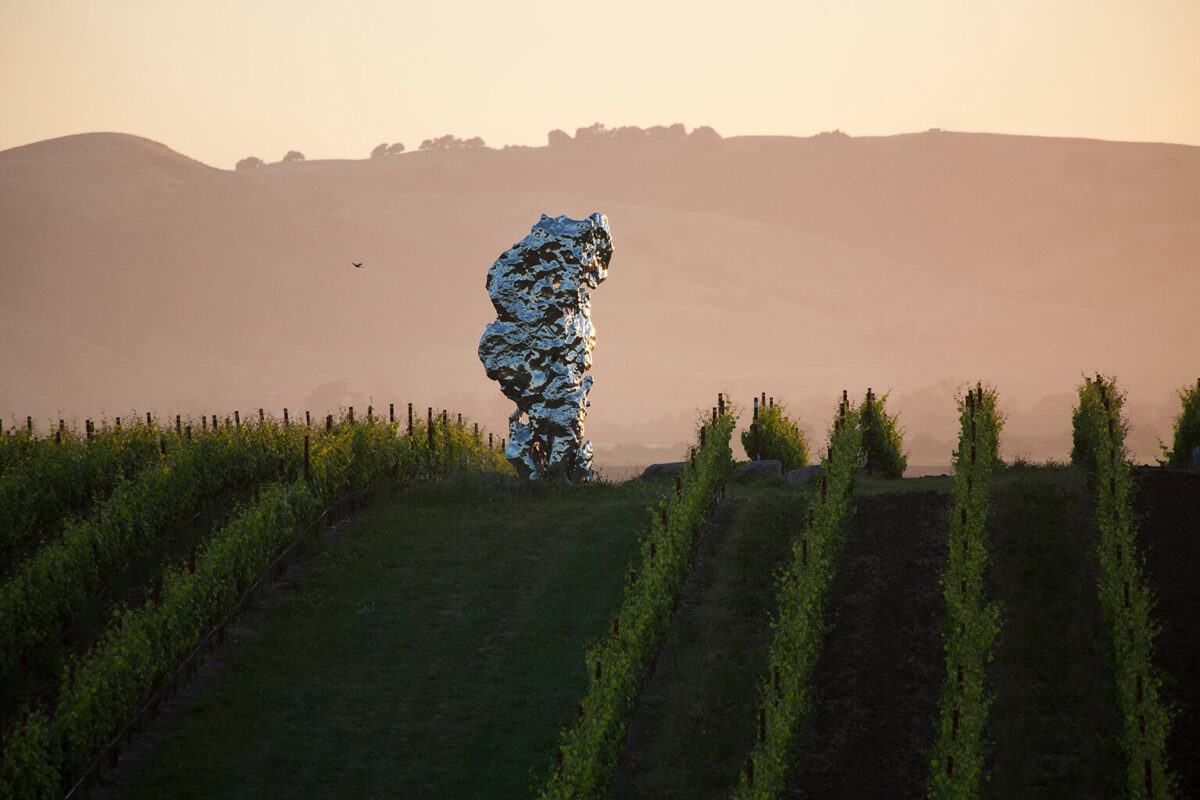Words by Sheryl Nonnenberg
With over 400 wineries in Sonoma County, a day-long trek in this sunny, rural community can often seem like a non-stop loop of sameness: fields of vines, well-appointed tasting rooms and measured sips of local varietals. A truly unique wine country experience awaits, however, with a visit to The Donum Estate. This 200-acre former dairy farm is a luxurious, multi-sensory haven for upscale art, wine and food, all within an hour’s drive north of the Golden Gate Bridge.
You get a sense that this is not just another winery as you veer off Highway 12 onto Ramal Road. Is that bright, shiny silver object on the hilltop a sculpture in the middle of verdant, flowing rows of grapevines? It is indeed and that is just the beginning of this art/wine odyssey.
We approach the large security gate and press the button, which results in a warm welcome and instructions to meet our host, Gabe Rodriquez, in front of the main building, referred to as The Home. As soon as we park the car, Gabe greets us with two glasses of chilled Chardonnay. He explains that our 90-minute “Discover Experience” begins with a brief tour of The Home followed by a specially-curated wine/food pairing.
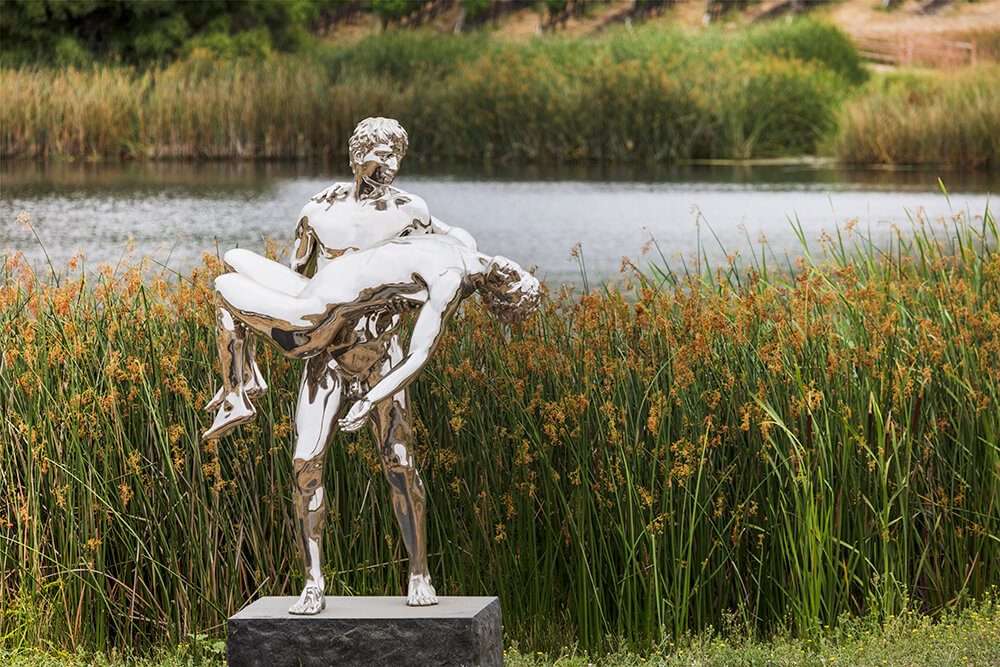
A respite from the hot sun sounds like a great idea and we follow Gabe into the main room of the recently remodeled ranch-style house. The foyer is spacious and airy, thanks to a vaulted ceiling and a wall of windows that look out over the rolling fields. Gabe shares that the owners of Donum (Latin for “gift of the land”) are Alan and Mei Warburg, who purchased the estate in 2011. An art collector for many years, Alan is a native of Denmark; Mei is Chinese and an artist. They began collecting sculptures for Donum, with the idea of creating an open-air museum that would enhance the beauty of the estate, which is also a working ranch.
Today, with over 50 monumental works, The Donum Collection is recognized as one of the world’s most accessible private sculpture collections.
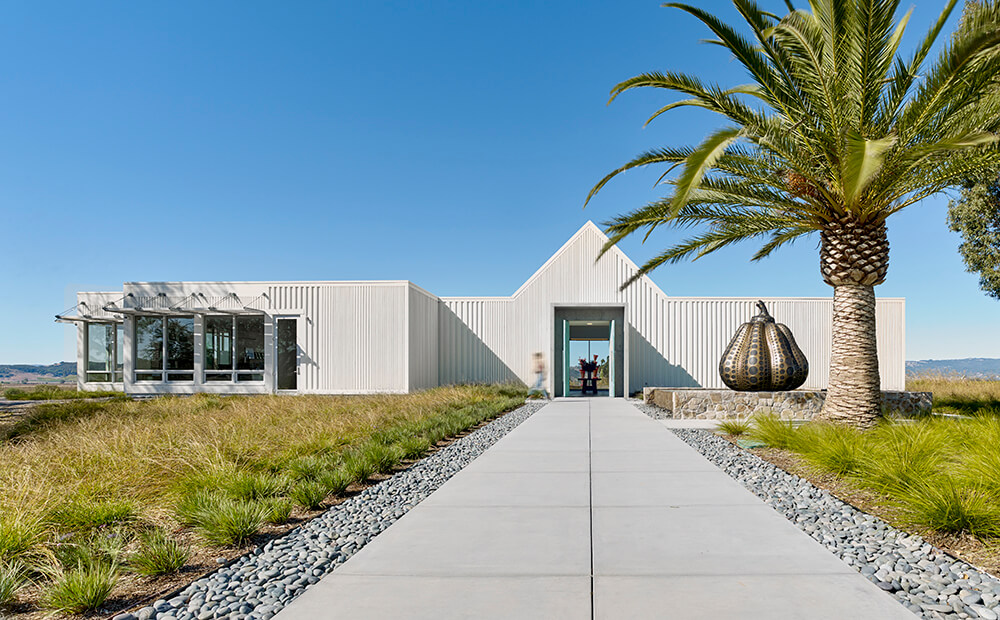
Image: Courtesy of Donum Estate
The couple’s combined backgrounds—East and West—are stamped in virtually every way on the Estate, from the Danish furniture in The Home to the internationally-known artists in their collection. It is reflected in the artwork on display in the main building, including an Andy Warhol portrait of Queen Margarethe II of Denmark and a very large Liu Xiaodong painting that makes a statement about the impact of pollution on future generations.
As we settle into the tasting room, Gabe describes the wines and food pairings we will experience, as well as the history of The Donum Estate winery, which earned organic certification this year. Donum produces single-vineyard, single-appellation Chardonnay and Pinot Noir wines, with the main focus on the Pinots. An elegant table setting includes four glasses and small plates with tiny bites so exquisitely crafted they could be works of art themselves. We begin with a 2019 Chardonnay, paired with a chilled spring gazpacho. We nod in agreement when Gabe points out how the tangy dill complements the crisp white finish. This is followed by several more delightful pairings, including a smooth 2018 Chardonnay with popcorn panna cotta and a luscious 2019 Pinot with smoked salmon mousse on crisp crostini.
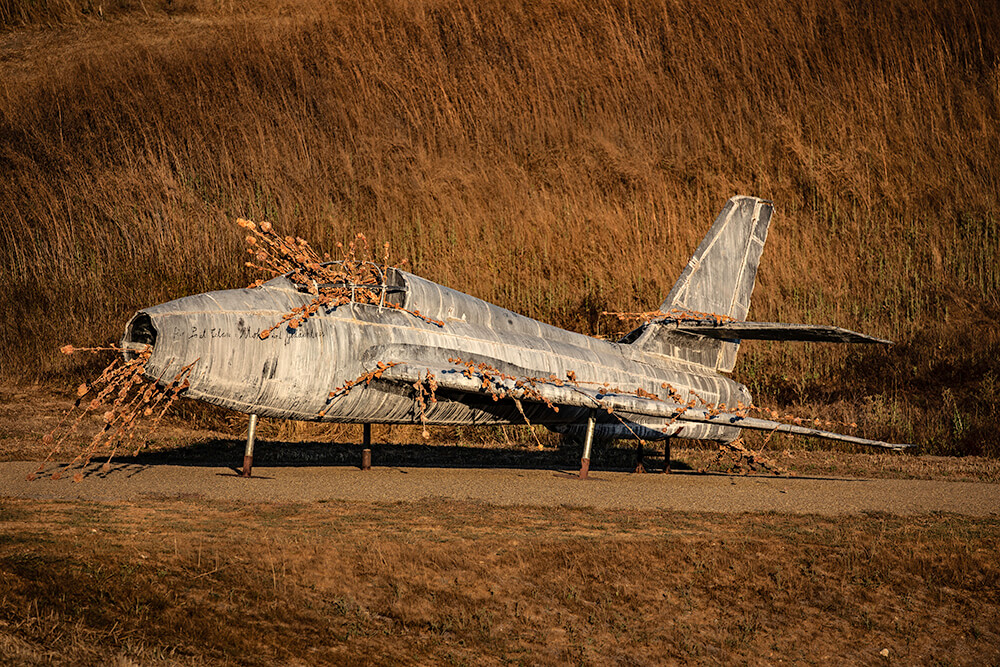
Image: Courtesy of Gregory Gorman
Although we had a private tasting, Donum is equipped to host both small and large groups, with gatherings of 40 or more accommodated in a patio area in the garden. As we take our final sips, I ask Gabe why the Warburgs are willing to open this beautiful estate to the public. “They just love the combination of wine and art and want to share it,” he responds. Gazing out the windows of this room, we see enticing teases: Pascale Marthine Tayou’s Mikado Tree, which looks like an accumulation of colorful pick-up sticks, is right in our line of sight, and to our left, a small building houses what must be one of the largest Louise Bourgeois Spider sculptures. It is time to don a sun hat and take the walking tour of the Donum collection. The Discovery Experience covers about two-thirds of the works; to see all of the pieces, visitors are advised to book the Explore Experience, which is conducted in an all-terrain vehicle and takes two hours.
As we walk past the large Yayoi Kusama pumpkin, installed in a fountain, Gabe conveys that many of the art acquisitions resulted from the Warburgs’ world travels, their interest in Asian history and their own personal relationships with artists internationally. The polka-dotted Kusama pumpkin is sited in front of the house because, as Gabe notes, “Donum is a place of nourishment, food, wine and good company.”
We head over to the specially-built structure that is home to the Bourgeois Crouching Spider. It is a cool 65 degrees in here in order to stave off rust on the large steel arachnid. A second Bourgeois piece, Mirror, created in cast aluminum, is installed on a nearby wall. Also here, a very large wall piece by Ghanian artist El Anatsui titled Rehearsal, which is composed of recycled materials like liquor bottle caps and makes a statement about waste, the environment and colonialism. We learn that the use of repurposed materials is a common theme in many of the sculptures in this collection.
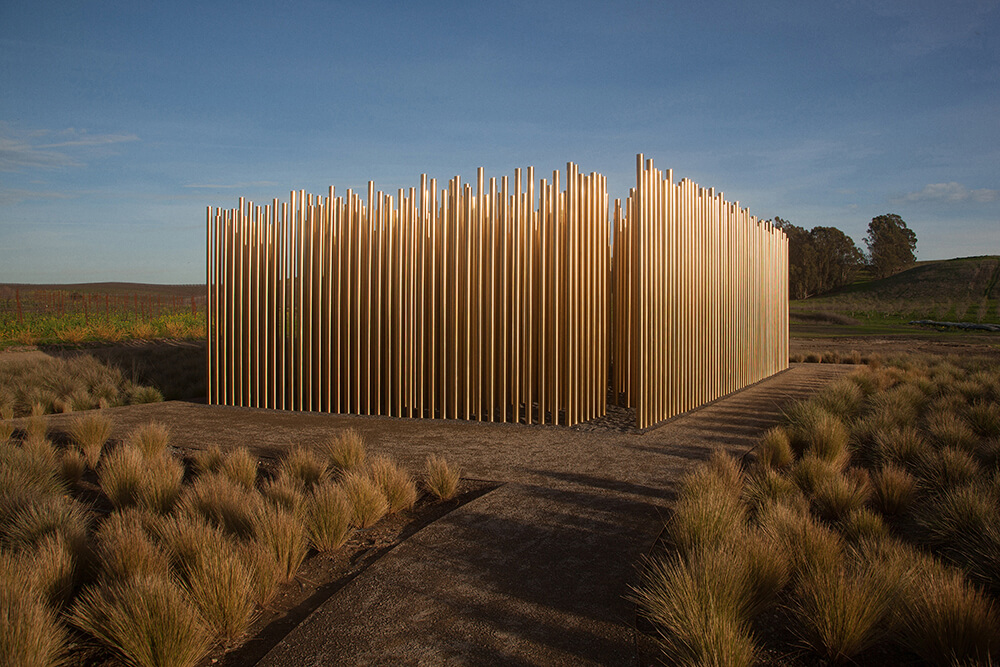
As we walk past the winery building, the cutting garden, the lavender field and the fenced barn where goats and donkeys move in and out of the hot sun, several things become apparent. This is a working ranch/winery that can boast being both functional and aesthetically beautiful. The sculptures are sited to be a cohesive, organic part of the landscape—so no need for stands or labels.
But it is also clear that many, if not most, of the sculptures make a serious statement about the world today. Gabe imparts that the deliberate placement of three pieces, a Robert Indiana Love (created in red and yellow to reflect the wines produced here), The Words I Love the Most by Egyptian artist Ghada Amer, in which Arabic words relating to love are cast in bronze, and Richard Hudson’s three-story-tall, polished mirrored steel heart entitled Love Me, serve as a counter to many of the other message-laden sculptures. “Even though there are numerous pieces about struggle and oppression,” Gabe explains, “the messages in these pieces cut through it.”
We end our time at Donum at the base of Jaume Plensa’s Sanna, a stunning, monumental head of a young girl with her eyes closed. “In many ways, it references the experience of The Donum Estate—a sensory experience of food, wine and art,” Gabe observes. “Sanna was a traveler,” he points out, “and we enjoy greeting travelers from all over.”


